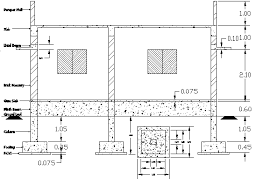Estimating the cost of a residential building is a crucial step in the construction process. It involves assessing the various components and materials required to complete the project and calculating their associated costs. Accurate estimation helps in budgeting, securing financing, and making informed decisions throughout the construction process. In this guide, we will outline the steps involved in estimating the cost of a residential building.
Determine Project Scope:
Begin by defining the scope of the residential building project. Consider factors such as the type of building (single-family home, duplex, etc.), the number of floors, the total area, and any specific design or architectural features. This will provide a clear understanding of the project requirements and assist in subsequent estimation steps.
Break Down the Project:
Break down the project into various components to facilitate a detailed cost estimation. These components typically include site preparation, foundation, structural framework, roofing, walls, windows, doors, plumbing, electrical systems, HVAC (heating, ventilation, and air conditioning), finishes (flooring, paint, fixtures), and landscaping. Create a comprehensive list that covers all aspects of the construction.
Quantity Takeoff:
Perform a quantity takeoff for each component to determine the amount of material required. This involves measuring and quantifying items such as concrete, bricks, steel, lumber, roofing materials, plumbing fixtures, electrical wiring, and finishing materials. Refer to architectural drawings, specifications, and construction plans to accurately identify the quantities needed.
Research Material Costs:
Research current market prices for the materials identified in the quantity takeoff. Contact local suppliers, visit construction supply stores, or refer to industry publications to obtain pricing information. Consider factors such as quality, brand, and availability when determining material costs. Keep in mind that prices can vary based on location and fluctuations in the market.
Labor Costs:
Estimate the labor costs associated with each component of the project. This involves determining the number of labor hours required and the corresponding labor rates. Consult with contractors, subcontractors, or experienced professionals to obtain labor cost estimates. Take into account different trades, such as carpentry, plumbing, electrical work, and painting, when calculating labor costs.
Equipment and Machinery:
Consider the equipment and machinery required for the construction process. This includes heavy machinery for excavation, material handling, and installation. Research rental costs or contact equipment suppliers to obtain estimates for the required equipment. Account for the duration of equipment usage and any associated operator costs.
Overhead and Contingency:
Factor in overhead costs, such as permits, insurance, utilities, and site office expenses. Include a contingency amount to account for unforeseen circumstances or changes during the construction process. A common contingency range is between 5% and 10% of the total estimated cost.
Calculate the Total Cost:
Calculate the total cost by summing up the estimated costs for each component. Add the material costs, labor costs, equipment costs, overhead costs, and contingency amount. This will provide an estimate of the total cost of the residential building project.
Review and Refine:
Review the estimate to ensure accuracy and completeness. Double-check quantities, rates, and calculations. Refine the estimate by considering any specific project requirements, local regulations, or additional costs that may arise during construction.
It’s important to note that estimating residential building costs can be complex and subject to various factors. Consider seeking professional assistance from a quantity surveyor or construction estimator to ensure a more accurate estimation, especially for larger or more complex projects.
In conclusion, estimating the cost of a residential building involves breaking down the project, conducting a quantity takeoff, researching material and labor costs, accounting for equipment and machinery, considering overhead and contingency, and calculating the total cost. Accurate cost estimation is essential for effective project planning, budgeting, and decision-making. It provides a baseline for financial planning, allows for effective resource allocation, and helps in securing financing from lenders or investors.

